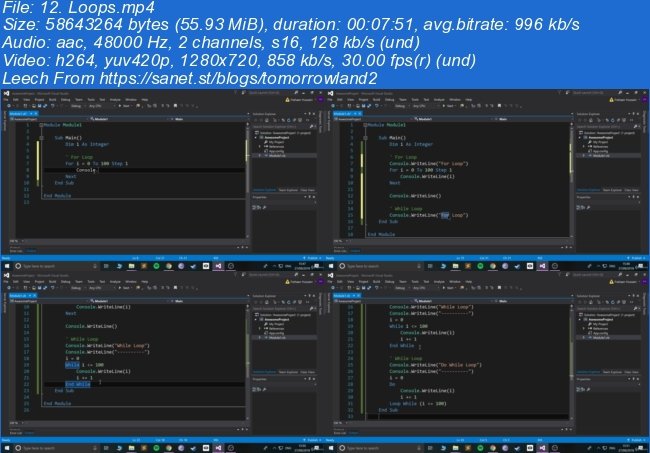

- Visual studio code tutorial for beginners pdf how to#
- Visual studio code tutorial for beginners pdf update#
- Visual studio code tutorial for beginners pdf iso#
Visual studio code tutorial for beginners pdf iso#
SQL was standardised in ANSI X3.135 in 1986, and, within a few months, it was adopted by ISO as ISO 9075-1987. The good thing about SQL is that, some of the most common tasks are the easiest to write. That said, you don’t need to learn all the advanced stuff in order to get started with SQL. SQL also enables you to perform more advanced actions such as creating stored procedures (self contained scripts), views (pre-made queries), and setting permissions on database objects (such as tables, stored procedures, and views). The same is true for other tasks, such as running queries, inserting data, etc. You can also perform database administration tasks, such as creating logins, automated jobs, database backups, and much more.Įven when you do stuff using a Graphical User Interface (GUI), your Database Management System ( DBMS) will almost certainly use SQL behind the scenes to carry out that task.įor example, when you create a database by clicking Create Database and entering the details of the new database into a dialog box, once you click OK or Create or whatever the button reads, your database system will use the SQL CREATE DATABASE statement to go ahead and create the database as specified. You can also create new database objects such as databases and tables.
Visual studio code tutorial for beginners pdf update#
You can use SQL to run queries against a database, insert records, update records, and delete records. SQL is used by all the major Relational Database Management Systems ( RDBMSs), including: SQL is the standard query language used for working with relational databases. SQL is an acronym for Structured Query Language.
Visual studio code tutorial for beginners pdf how to#
I’ll also show you how to insert data into that database, update data, delete data, and run queries against it.


In this SQL tutorial, I’ll show you how to create such a database using SQL. This query assumes that there is a column called PetName and a table called Pets in the database. The WHERE clause filters our query to just the rows where the PetName column has a value of Fetch. If we wanted to return less data, we would actually need to write more.įor example, if we only wanted pets named Fetch, we would add a WHERE clause that stipulated that requirement.

The simplest SQL queries are usually the most powerful. That’s one of the beautiful things about SQL. It’s a quick and easy way to get all columns without having to type them all out. The asterisk ( *) is a wildcard character, which means “all columns”. It returns all columns and all rows from the table called Pets. This simple SQL statement actually does a lot. This is a perfect example of how easy it can be to write SQL. Here’s an example SQL statement: SELECT * This SQL tutorial will get you running SQL queries in no time! SQL Example In this SQL tutorial for beginners, you will create your own database, insert data into that database, and then run queries against that database.


 0 kommentar(er)
0 kommentar(er)
